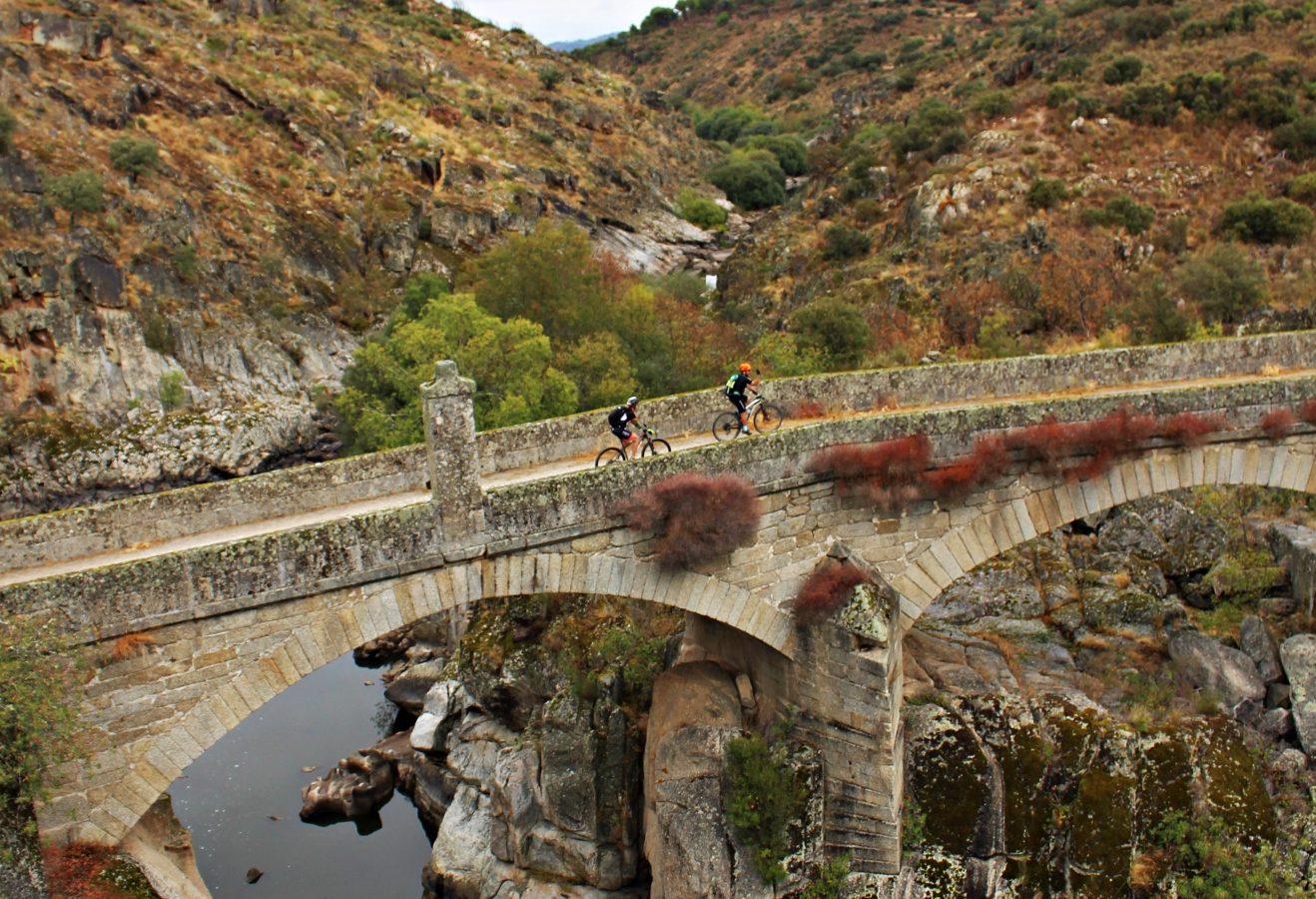
AH Castelo Mendo – AH Almeida
Great Bicycle Route
![]() Castelo Mendo, Almeida
Castelo Mendo, Almeida
![]() 18.67 km
18.67 km
![]() Castelo Mendo
Castelo Mendo
![]() 1:30
1:30
Places of passage: Leomil, Ansul, Aldeia Nova, Ponte Grande Rio Côa.
Leaving the Historical Village of Castelo Mendo due north, this section follows along plateaus overlooking the Côa. It starts as a dirt road to the EN16, near which it crosses the A25 by an underpass. From this point, it goes on flat terrain and again on dirt road to Leomil, then passing by Ansul and arriving at Aldeia Nova, always in the same kind of environment. Continuing on the plateau, the route meets the EN340, where it joins the Côa Great Route (GR), to jointly cross the river over the old bridge and go up ancestral pathways to the Historical Village of Almeida, parting just before it.
Fauna and Flora
_CASTELO MENDO_ In the framework of the Historical Village of Castelo Mendo, we are in an environment of cereal crops; however, in the wetter areas, we can find orchids of the genus Serapias. After crossing the Côa river, we enter a more open area with less trees, where some patches of oak trees and evergreen oaks can be found. This is an area where grassy plants predominate and where fields are now bordered by stone walls. Species such as the white stork, the black kite, the Montagu's harrier, the northern wheatear, or the red-capped lark can be seen. It is also noteworthy that in the valley of the Alfaiates stream, among the narrow-leaved ashes and the alder trees, there is an abundance of Eurasian blue tits, Eurasian blackcaps, wrens, and Western Bonelli's warblers, among other species. _ALMEIDA_ In this region, the Côa valley is characterized by a rugged granite slope with patches of vines and grain fields, but where the low and dense white broom undergrowth predominates and where the Spanish lavender and the Spanish wild marjoram have a significant expression. There are also some clusters of gum cistus, associated with metamorphisms of the granite in this place. In terms of avifauna, there is a mix of species typical of rocky shrub environments and species from cereal environments (such as the red-capped lark). The Seco river area is a wide area with slight slopes, where we can find white broom, pine forest, and fallow fields, with a significant Pyrenean oak patch, in a structure of bocage. Here we can see species such as the Eurasian golden oriole, the black kite, the spotless starling, and the European serin, among others.



